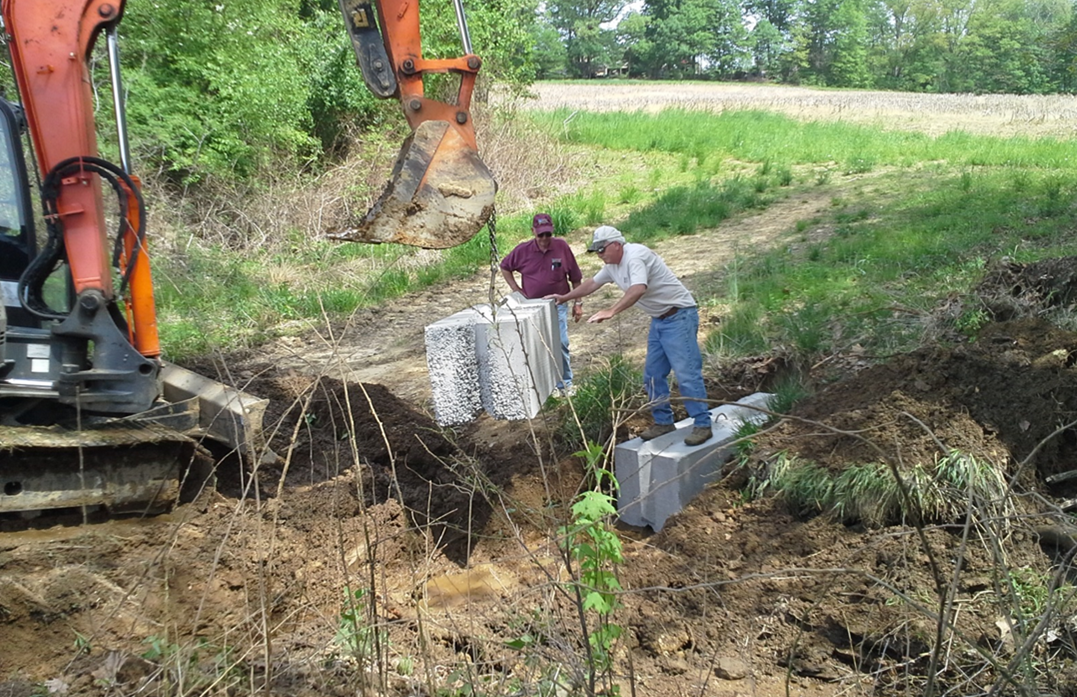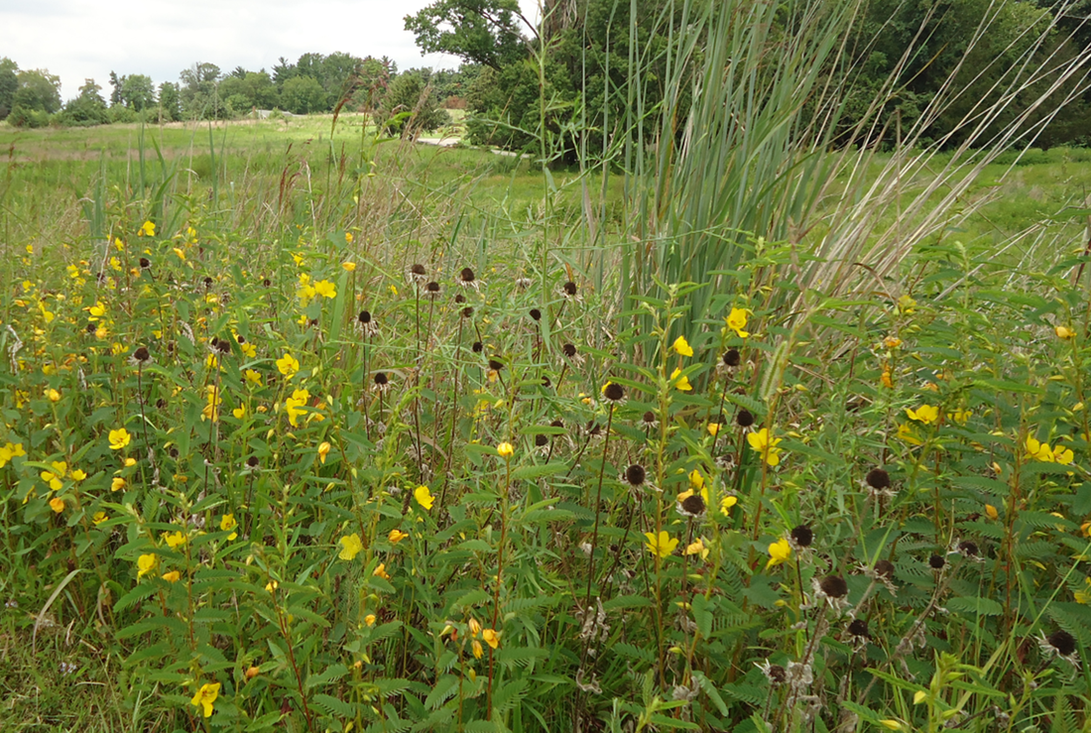| 2014 Annual Report | |
| File Size: | 4232 kb |
| File Type: | |
The VUJC Land Stewardship Initiative took major steps forward in 2014. After working for the previous two years to establish the organization and implement the conservation practices we most want to showcase, we were ready to begin working with ag and forestry businesses as well as the community as a whole to promote conservation.
This year, we strengthened relationships with sponsors to ensure that the Initiative will continue to grow as a conservation advocate. Some of our major supporters have been Pioneer, Agri Drain, and most recently, the City of Jasper’s Storm Water Management Board. We are excited that the city has recognized that conservation benefits people in town just as it does those in more rural areas.
Support from the community is great cause for optimism, but most encouraging is the continued participation of a diverse group of agency partners, industry professionals, and academics. Under the guidance of this group, the Initiative has achieved the goals set down in its long term plan and even expanded in scope. We look forward to continued growth in 2015.
This year, we strengthened relationships with sponsors to ensure that the Initiative will continue to grow as a conservation advocate. Some of our major supporters have been Pioneer, Agri Drain, and most recently, the City of Jasper’s Storm Water Management Board. We are excited that the city has recognized that conservation benefits people in town just as it does those in more rural areas.
Support from the community is great cause for optimism, but most encouraging is the continued participation of a diverse group of agency partners, industry professionals, and academics. Under the guidance of this group, the Initiative has achieved the goals set down in its long term plan and even expanded in scope. We look forward to continued growth in 2015.
Improving The Natural Resources
|
Nearly a mile of new tile was installed this spring. Most interesting, a partnership with Agri Drain funded the addition of an innovative tile system that reduces nutrient runoff and allows “sub-irrigation” of the field. The system utilizes a gate at the tile’s outlet that can be closed at certain times of the year. Surface inlets allow the system to capture water from summer storms: both reducing runoff and flooding water back through the lines to “sub-irrigate” the field when crops need water most. The system also allows us to slow water as it leaves the field in the fall ensuring that the cover crop has opportunity to capture nutrients from the decaying cash crop residue. We anticipate healthier crops in the summer and cleaner water in the fall.
This November, volunteers applied herbicide to invasive plants growing in five acres of the forest surrounding the campus. Most importantly, over half a mile of forest edge was treated. These edge areas are usually home to the most prolific seed producing plants; removing invasives along the forest’s edge greatly reduces their capacity to spread. The herbicide was applied after plants native to our area went dormant for winter. This timing allowed for the removal of invasive plants without harming native species. The majority of the plants treated this year were Japanese honeysuckle and Asian bush honeysuckle. |
Following an enormous rain this spring, it became obvious that it would be necessary to build two grassed waterways in the Initiative’s largest field. Local businesses, including Cave Quarries, contributed over $600 worth of materials to help cover the cost of constructing the waterways. The waterways do occupy some cropland, but the area was less productive because of erosion. Stabilizing the field should prove to be the right decision both economically and environmentally.
A new crossing was installed that has already made it easier to move equipment between fields. Interlocking concrete blocks widen and flatten the ditch bottom. As added benefit, the crossing slows water as it moves down the ditch, allowing sediment to settle out and reducing erosion downstream.
Soil tests were pulled on a three acre grid this fall. The Initiative’s ag committee will use the results of these tests to develop a variable rate nutrient management plan. Rather than applying fertilizer at the same rate over the entire farm, we will be able to apply nutrients where they are needed most and hold back where they are less likely to be utilized by crops. Applying fertilizer this way is not only more economically efficient; it also has the environmental benefit of potentially reducing the amount of fertilizer that leaves the field.
Soil tests were pulled on a three acre grid this fall. The Initiative’s ag committee will use the results of these tests to develop a variable rate nutrient management plan. Rather than applying fertilizer at the same rate over the entire farm, we will be able to apply nutrients where they are needed most and hold back where they are less likely to be utilized by crops. Applying fertilizer this way is not only more economically efficient; it also has the environmental benefit of potentially reducing the amount of fertilizer that leaves the field.
Ensuring an Ongoing Program
This summer, the Initiative hosted a luncheon for businesses and community members who may have had interest in partnership with the Land Stewardship Initiative. The luncheon was well attended and has proven successful as a means for introducing the Initiative to the community. It will likely become an annual event.
2014 was the first full year during which the quality of water leaving the property was tested. Drainage tiles and surface inlets were installed in 2012 that allow for the comparison of water leaving our farm to water leaving the residential area to the north. We have also begun monitoring subsurface drainage and the water retained in the gated tile system. It is still too soon to draw any conclusions based on the information; we will continue monitoring the water quality to and examine the data for any interesting developments.
Monitoring of the habitat quality and nutrient loading in the ditches and creeks around the property remains one of our important tools for estimating the ecological impact of our management practices. As we continue to improve the property’s drainage, we expect to see rates of erosion continue to decline.
Work has begun on an interpretive trail which will offer walkers an understanding of basic forest ecology and management. An addition installed this fall brought the total length of the interpretive trail to about one mile.
Monitoring of the habitat quality and nutrient loading in the ditches and creeks around the property remains one of our important tools for estimating the ecological impact of our management practices. As we continue to improve the property’s drainage, we expect to see rates of erosion continue to decline.
Work has begun on an interpretive trail which will offer walkers an understanding of basic forest ecology and management. An addition installed this fall brought the total length of the interpretive trail to about one mile.
|
The Dubois County Soil and Water Conservation District held a hands-on rain garden workshop this fall. After a complete class on designing and installing rain gardens, workshop attendees completed the day by planting a rain garden that had been prepared on campus. Along with reducing runoff and providing wildlife habitat, the prominently displayed rain garden will serve as a model to those who want to bring conservation to their own backyards.
|
A portion of the prairie was mowed this fall: The disturbance helps flowering plants compete with the native grasses and increases plant diversity. The disturbed area will be seeded with flowering plants this winter. The prairie is an important source of habitat for wildlife and pollinators. It will be evaluated annually to determine management necessary to keep the ecosystem functioning.
Developing an Education & Demonstration Center
Soil and plant biomass samples pulled this year will allow us to continue to monitor changes to soil structure, chemistry, and biological activity. Changes are slow to develop but slight differences are being reported between the no-tilled and cover cropped field and the control strip which is tilled each spring.
The farm’s soybean crop averaged a yield of 54 bushels per acre this year. Yield maps are available in the appendix. There was no clear difference in productivity in the tilled control strip. While we must continue to wait on the benefits of improved soil health, it is clear that this spring’s tillage of the control strip produced no additional yield.
The Initiative has entered into a partnership with Gypsoil to evaluate changes gypsum can bring to a soil. Gypsoil donated 50 tons of gypsum that was applied at varying rates to the majority of the Initiative’s cropland. A control strip in one field received no gypsum and will be used as a comparison to the treated soils. As with all changes in the soil, the gypsum’s effects are expected to manifest slowly, but over time we expect to find improved soil aggregation and water infiltration.
The farm’s soybean crop averaged a yield of 54 bushels per acre this year. Yield maps are available in the appendix. There was no clear difference in productivity in the tilled control strip. While we must continue to wait on the benefits of improved soil health, it is clear that this spring’s tillage of the control strip produced no additional yield.
The Initiative has entered into a partnership with Gypsoil to evaluate changes gypsum can bring to a soil. Gypsoil donated 50 tons of gypsum that was applied at varying rates to the majority of the Initiative’s cropland. A control strip in one field received no gypsum and will be used as a comparison to the treated soils. As with all changes in the soil, the gypsum’s effects are expected to manifest slowly, but over time we expect to find improved soil aggregation and water infiltration.
If you would like a chance to tour the LSI property to see these changes in person or have questions about adopting cover crops please call Melissa Ruschau to arrange a visit (812) 482-1171 ext. 3. The district has purchased a soil health testing kit and is willing to come to your farm for a site visit and evaluation of your soils’ health because after all - Soil health is the root of everything!






